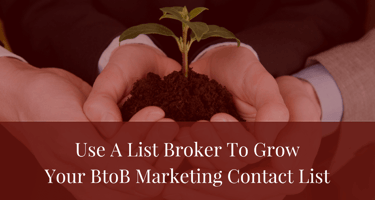Known buyers with brand loyalty simply cannot be bought. For this reason, many businesses view...
Creating Your Professional LinkedIn Profile

Your LinkedIn profile is a great career networking tool. Many people first come on LinkedIn to find a job or change careers. Once you create your profile, you open yourself to a professional network. Whether you're aiming to generate leads, attract recruiters, or network with industry professionals, creating an impressive LinkedIn profile is essential. In this guide, we'll delve deeper into each section of your profile and provide detailed tips and ideas to help you optimize your presence on the platform.
1. Professional Profile Picture
Your profile picture is the first thing people notice, so make sure it leaves a positive impression. Choose a high-quality, professional-looking photo where you're dressed appropriately for your industry. A smile can make you appear more approachable and friendly. Ensure the background is plain and uncluttered to keep the focus on you.
- Why It Matters: A professional photo makes your profile 14 times more likely to be viewed. It's your first impression, so choose a clear, professional shot with a neutral background.
- Tip: Ensure good lighting and dress as you would for a job interview in your industry.
2. Compelling Headline
Your headline is like a mini elevator pitch. It should succinctly convey who you are and what you do. Instead of simply stating your job title, use keywords that highlight your expertise and value proposition. For example, instead of "Marketing Manager," you could say "Digital Marketing Strategist | SEO Expert | Content Creator."
- Why It Matters: Your headline is not just your job title. It's a chance to showcase your specialty or value proposition in 120 characters or less.
- Tip: Use keywords relevant to your industry and include what you do and how you benefit a potential employer or client. E.g., "Digital Marketing Specialist | SEO & SEM Expert | Driving Engagement & Leads".
3. Engaging Summary (About Section)
Your summary is your opportunity to tell your story and showcase your personality. Keep it concise yet compelling, focusing on your unique strengths, achievements, and career goals. Consider incorporating a call to action, inviting visitors to connect with you or learn more about your work.
- Why It Matters: This section is your opportunity to tell your professional story. A well-crafted summary can engage readers and give them a reason to connect.
- Tip: Use the first person, keep it concise, and focus on your accomplishments and skills. Mention your career objectives and how you solve problems.
4. Showcase Your Experience
Your experience section should provide a comprehensive overview of your professional background, highlighting your key responsibilities, achievements, and contributions in each role. Use bullet points to break down your accomplishments for clarity and readability. Quantify your achievements whenever possible to showcase your impact.
- Why It Matters: Your experience section is where you validate your expertise. Detailing your past roles, responsibilities, and achievements gives credibility.
- Tip: For each role, briefly describe your responsibilities and highlight your achievements with quantifiable results. Use bullet points for readability.
5. Skills & Endorsements
List your key skills prominently on your profile and encourage colleagues, clients, and supervisors to endorse you. Endorsements provide social proof of your expertise and help validate your skills. To attract more endorsements, consider endorsing others in your network—they're likely to reciprocate.
- Why It Matters: Listing relevant skills can improve your profile’s visibility in searches. Endorsements from your network add credibility.
- Tip: Prioritize skills that are most relevant to your career goals. Regularly update this section as you acquire new skills.
6. Recommendations
Requesting recommendations from colleagues, managers, or clients adds credibility to your profile. Reach out to individuals who can speak to your skills, work ethic, and professional accomplishments. Personalized, genuine recommendations carry more weight than generic ones, so be specific in your requests.
- Why It Matters: Recommendations from colleagues, clients, or employers serve as personal testimonials to your professional abilities.
- Tip: Politely ask for recommendations from those who know your work well. Offer to reciprocate if appropriate.
7. Customized URL
Customizing your LinkedIn URL not only makes it easier for people to find you but also enhances your personal branding. Ideally, your URL should be your name or a variation of it. If your name is common, consider adding your profession or industry to make it unique.
- Why It Matters: A personalized URL looks professional and is easier to share.
- Tip: Ideally, use your name. If that’s taken, include your middle initial or professional designation.
8. Engage with Your Network
LinkedIn is a powerful platform for sharing insights, industry news, and thought leadership content. Regularly share articles, blog posts, or updates relevant to your field to demonstrate your expertise and stay top-of-mind with your network. Engage with other users' posts by commenting thoughtfully and sharing valuable insights.
- Why It Matters: Regularly engaging with your network by sharing articles, commenting on posts, and publishing your own content establishes you as an active and knowledgeable professional in your field.
- Tip: Share content relevant to your industry, and don’t be afraid to voice your insights. Consistency is key.
9. Education and Certifications
Showcase any relevant certifications, courses, or professional development activities you've completed. This demonstrates your commitment to continuous learning and improvement, which is highly valued by recruiters and employers.
- Why It Matters: Listing your educational background and any certifications enhances your profile’s strength and credibility.
- Tip: Include any courses or certifications that are relevant to your industry or that showcase your commitment to continuous learning.
10. Use Keywords Wisely
Optimizing your profile with relevant keywords is crucial for increasing your visibility in LinkedIn searches. Conduct research to identify industry-specific terms, skills, and expertise that recruiters or potential clients might be looking for. Incorporate these keywords strategically throughout your profile, including your headline, summary, and experience sections.
- Why It Matters: Recruiters often use specific keywords to find potential candidates. Using the right keywords throughout your profile, especially in your headline, summary, and experience sections, can make you more visible.
- Tip: Research commonly used terms in your industry and incorporate them naturally into your profile.
11. Professional Background Image
Make use of the background image space on your profile to reinforce your personal brand. Choose an image that aligns with your industry or showcases your professional interests. You could use your company's logo, a relevant industry image, or a personalized banner that reflects your expertise and interests. Avoid using generic or distracting backgrounds.
12. Visual Elements
LinkedIn allows you to enhance your profile with multimedia content such as videos, presentations, and documents. Utilize this feature to showcase your work samples, presentations, or projects. This visual content can provide a more comprehensive view of your skills and capabilities.
- Why It Matters: Adding presentations, videos, and documents can make your profile more engaging and give a tangible sense of your work.
- Tip: Use the "Featured" section to showcase your best work. Ensure any shared content is up to date and relevant to your professional goals.
Conclusion
Crafting an impressive LinkedIn profile is a strategic process that involves more than just listing your experiences. By following these tips and regularly updating your profile, you can significantly increase your visibility to leads and recruiters, showcasing not just where you’ve been, but where you’re capable of going in your career. Remember, LinkedIn is a dynamic platform; staying active and engaged is key to leveraging its full potential.






